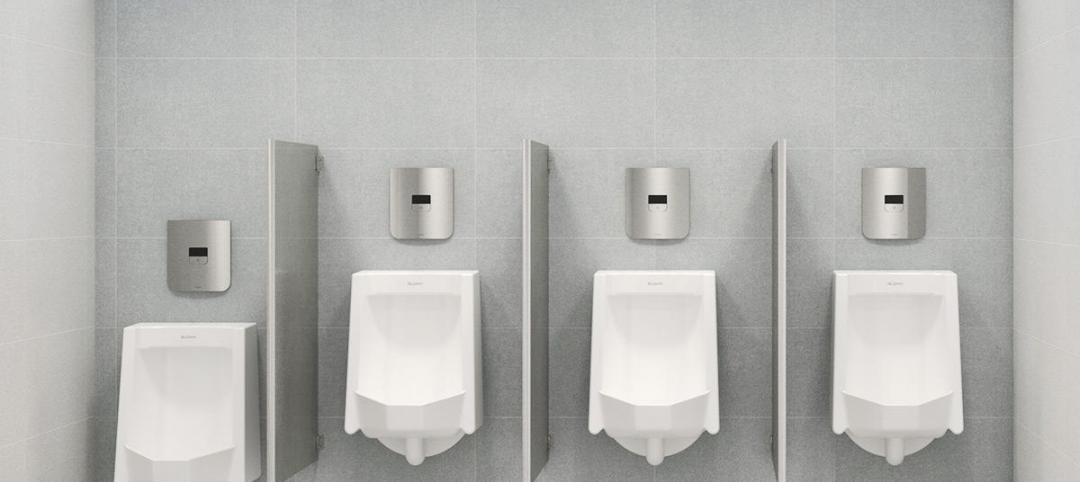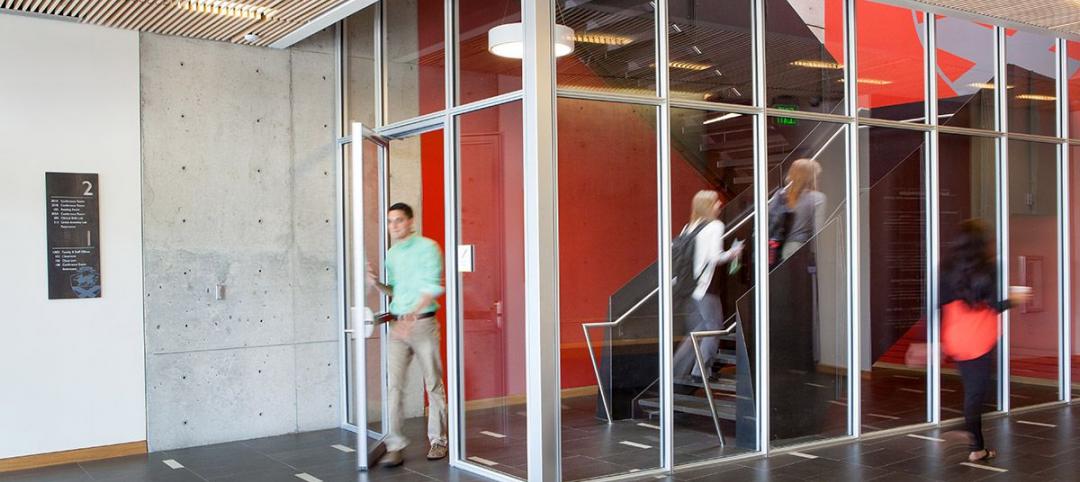Many wondered if the U.S. commercial construction industry would ever recover from the darkest days of the recession, particularly in late 2009 and early 2010. Jones Lang LaSalle’s (JLL) 2013 Construction Outlook (PDF) finds that “Extreme Makeover” couldn’t be more appropriate for the commercial construction industry comparing 2009 to present. Just a few years after the recession brought the U.S. commercial construction sector to a standstill, the annual report paints a picture of a recovering, more diversified industry with less risk and revived funding.
“The construction industry has evolved significantly in the last five years,” said Todd Burns, President of JLL’s Project & Development Services group with responsibility for the Americas. “In particular, commercial construction is now characterized by an absence of overbuilding, coupled with a diverse focus that is less dependent on residential housing. Growth in sectors such as healthcare, retail, distribution and lodging has shaped a more stable industry in the long-term.”
By The Numbers
According to three key industry indicators, “cautious optimism” is the pervading sentiment among industry leaders in the fourth quarter of 2013. In August, the Dodge Momentum Index, which tracks projects in planning stages, surged 11.1 percent from the second quarter of 2013. Likewise, the American Institute of Architects (AIA) Architecture Billings Index – based on inquiries for new projects and construction spending – reached 52.7 and regained momentum lost during the first quarter of 2013. The Construction Backlog Index (CBI) also demonstrated steady improvement, rising to 8.2 months of contractor backlog.
Then & Now: Four Characteristics of the Post-Crisis Construction Industry
The Jones Lang LaSalle (JLL) Construction Outlook identified four trends helping – and hindering – construction growth in this new economic cycle:
1. Financing is Back
Then: A frenzy of overheated lending precipitated the real estate market and drove record construction starts, even as the global financial crisis emerged in 2008. By 2009, construction lending froze, as banks scrambled to reduce risks.
Now: Echoing the healthy activity in construction spending, commercial lending conditions are improving, even while lending standards have remained stagnant. The low cost of capital and re-emergence of the CMBS market have both enabled increased liquidity and easier lending. New CMBS issuance totals $50.8 billion so far through the beginning of August 2013, twice the level achieved through the first eight months of 2012. According to the Federal Reserve Board’s Commercial Lending Sentiment survey, 47.8 percent more respondents reported higher demand for commercial real estate loans in the third quarter of 2013 compared to the second quarter. This dwarfs the 23.4 percent response seen this time last year, and represents the biggest improvement in demand in more than a decade.
2. Construction has Become Expensive
Then: Building materials kept construction costs manageable before the crisis. High demand for new construction and free-flowing financing drove bulk purchases at lower prices.
Now: Construction costs are outpacing the recovery in most of the country. The booming single-family home sector has generated rising construction costs for the commercial sector as well, including driving up the cost of labor. According to Rider Levett Bucknall’s Construction Cost Index, which uses construction fees to derive a trend in overall construction costs, the cost of construction increased 3.6 percent this year. This compares to a 1.5 percent increase this time last year, and annual growth rates that barely eclipsed two percent in the last two years.
3. All Buildings are Green Buildings – the Best are Both Green and Smart
Then: Green building features were incorporated upon request, but were generally viewed as expensive and “nice to have” luxuries.
Now: Environmentally-sustainable features are viewed as table stakes by owners and developers, and attention to green building materials is considered a core competency.
LEED v4 formally launched this month and introduced new changes to enhance green building standards. Major new provisions in LEED v4 include expanding property type-specific designations, weighing points more heavily on optimizing energy performance, and a new “cradle to cradle” component. The cradle to cradle provision seeks to ensure that the products and resources used during construction are safe and designed for recycling or composting, and that the manufacturing process for construction materials manages its carbon footprint.
“Enhanced LEED certification is a competitive differentiator, particularly with any project driven by the Federal Government,” said Dermot Roe, Managing Director and National Construction Lead for JLL. “We anticipate that most projects will strive to be certified under LEED 2009 until 2015, when it will be phased out. Others may seek IgCC certification – it will be interesting to see these two standards collaborate and compete.”
4. Sandy, Stimulus and PPPs Shape Revenue
Then: Demand for construction came primarily from private-sector economic expansion.
Now: Much-needed infrastructure updates and rebuilding in the wake of severe storms are driving construction recovery in many geographies.
While infrastructure is clearly an issue facing the U.S., currently there are little funds available to states for new projects. As a result, public-private partnerships (PPPs) are emerging as a solution when public funding is limited. Natural disaster reconstruction remains “top of mind” for construction executives on the one-year anniversary of Superstorm Sandy, as climate analysts predict more frequent volatile storms in the future.
“While there is a steep learning curve associated with managing storm recovery and large-scale infrastructure projects now, construction firms who invest the time and resources to be successful in this sector will be well-positioned for growth in the future,” said Roe.
Jones Lang LaSalle’s Project and Development Services (PDS) group employs more than 1,000 project management professionals across the country with expertise in occupancy planning, relocation and build-out, multisite program management, ground-up construction and complex redevelopments. PDS professionals advise on project initiation, planning, design, construction and closeout for single assignments or multiple projects across a portfolio, functioning as a manager or at-risk developer, overseeing some or all phases of the development process. One of the world’s leading project management organizations serving commercial buildings, JLL has significant experience in office, hotel, retail, industrial and distribution centers, hospitals, universities, sports facilities, data centers and call centers.
For more news, videos and research resources on Jones Lang LaSalle, please visit the firm’s global media center web page: http://bit.ly/18P2tkv.
About Jones Lang LaSalle
Jones Lang LaSalle (NYSE:JLL) is a professional services and investment management firm offering specialized real estate services to clients seeking increased value by owning, occupying and investing in real estate. With annual revenue of $3.9 billion, Jones Lang LaSalle operates in 70 countries from more than 1,000 locations worldwide. On behalf of its clients, the firm provides management and real estate outsourcing services to a property portfolio of 2.6 billion square feet and completed $63 billion in sales, acquisitions and finance transactions in 2012. Its investment management business, LaSalle Investment Management, has $46.7 billion of real estate assets under management. For further information, visit www.jll.com.
Related Stories
75 Top Building Products | Dec 16, 2019
Top Window and Door Products for 2019
Pella’s Rolscreen retractable screen and NanaWall’s HSW single-track sliding glass wall are among the 16 window and door products to make Building Design+Construction’s 2019 101 Top Products report.
75 Top Building Products | Dec 16, 2019
Top Structural Products for 2019
Inpro’s Fireline 140 fire barrier and Owens Corning’s Foamglas cellular glass insulation are among the 10 structural products to make Building Design+Construction's 2019 101 Top Products report.
75 Top Building Products | Dec 16, 2019
101 Top Products for 2019
Building Design+Construction readers and editors select their top building products for the past 12 months in the fourth-annual 101 Top Products report.
75 Top Building Products | Dec 16, 2019
Top Plumbing Products for 2019
Sloan's CX Flushometer and Zip Water's HydroTap are among the eight plumbing products to make Building Design+Construction's 2019 101 Top Products report.
75 Top Building Products | Dec 16, 2019
Top Interior Building Products for 2019
Arktura's Delta Drop ceiling and CertainTeed's Decoustics Rondolo wood panels are among the 13 new interior products to make Building Design+Construction's 2019 101 Top Products report.
75 Top Building Products | Dec 16, 2019
Top Glass and Glazing Products for 2019
SageGlass's Harmony dynamic glass and Vitro Architectural Glass's Acuity low-iron glass are among the nine new glass and glazing products to make Building Design+Construction's 2019 101 Top Products report.
75 Top Building Products | Dec 16, 2019
Top Flooring Products for 2019
Tarkett’s aviation-inspired flooring collection and J+J Flooring’s textile composite flooring are among the four new commercial flooring products to make Building Design+Construction’s 2019 101 Top Products report.
75 Top Building Products | Dec 16, 2019
Top Building Systems Products for 2019
FabricAir’s ceiling-hung fabric duct and Ellumi Lighting’s bacteria-killing lights are among the 13 new building systems products to make Building Design+Construction's 2019 101 Top Products report.
75 Top Building Products | Dec 12, 2019
Top Building Envelope Products for 2019
Sto's beetle-inspired exterior coating and Dörken Systems' UV-resistant vapor-permeable barrier are among the 28 new building envelope products to make Building Design+Construction's 2019 101 Top Products report.
Architects | Dec 10, 2019
Calling all emerging architects: Enter to win the $20,000 Forge Prize
This annual steel design competition will recognize three Finalists ($10,000 each) and one Grand Prize Winner ($20,000 total) for their novel concepts in steel-based structures. Entries are due Jan. 15, 2020.

















